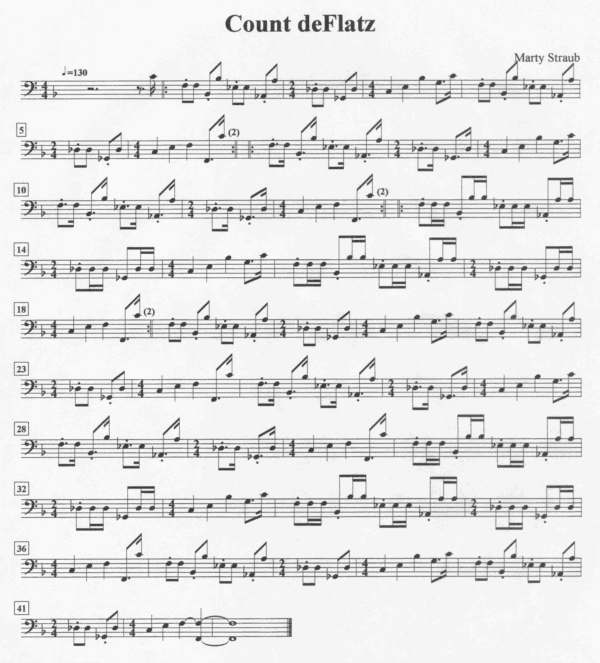
Full MIDI Version
1st Count
2nd Count
3rd Count
Noah Count
Full NoteWorthy Version
Download a free NoteWorthy Player
Pull up the notation
with position markings.
Compare the TAB version.
(both open in separate window)

Full MIDI Version
1st Count
2nd Count
3rd Count
Noah Count
Full NoteWorthy Version
Download a free NoteWorthy Player
Pull up the notation
with position markings.
Compare the TAB version.
(both open in separate window)
This exercise is a good reminder of how many flats there are in the keys with flats. Flat keys cycle down a 5th, and sharp keys cycle up a 5th, from C, which has no flats or sharps. Up a 5th from C is G, which has one sharp. A 5th up from G is D with 2 sharps, and so forth. This tune flows down the flats' side (counterclockwise) of the
cycle of fifths. If you sing, "There's 1, there's 2, there's 3, there's 4, there's 5, there's 6, but shoudn't be 7" to the bass line, the note you're on when you sing the number will be the key that has that number of flats. It also snickers that a B should be written with 5 sharps instead of 7 flats. Another tip here is: in notation, the name of the flat key is the next to the last flat in the signature (reading left to right), keeping in mind that F is the key with only one flat.
Does that sound like the language used in instructions to build the stuff we buy?
Even if you already know what flats go where, or you don't much care, this clyp could have some challenges for you, especially at 130 bpm. Let me know if you'd like a specially made version of any of these clypse.

Go back to the Practice Clips.
©2003 Mell-O-Dee-O-Dough Music